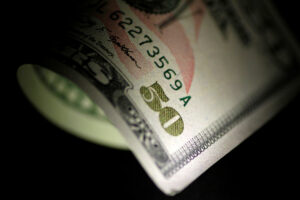
‘Hot money’ outflows rise to $236M in March
By Luisa Maria Jacinta C. Jocson, Reporter
MORE FOREIGN PORTFOLIO investments left the Philippines in March, as investors anticipated a delay in rate cuts by the US Federal Reserve, data from the Bangko Sentral ng Pilipinas (BSP) showed.
Transactions on foreign investments registered with the central bank through authorized agent banks posted a net outflow of $236.02 million in March, significantly higher than the $70.26-million outflows in the same month a year ago.
This was also a reversal of the $689.27-million net inflows recorded in February.
Foreign portfolio investments are called “hot money” because of the ease with which they can enter or leave a jurisdiction, as opposed to foreign direct investments, which are considered less fickle.
Central bank data showed that gross outflows for the month nearly doubled (91.4%) to $1.6 billion from $859.07 million in February.
Year on year, gross outflows jumped by 24% from the $1.3-billion outflows in March 2023.
The US received more than half (53.9%) of total outward remittances, equivalent to $887 million.
Meanwhile, gross inflows declined by 9.1% to $1.4 billion in March from $1.5 billion in the previous month. On the other hand, it rose by 12.1% from $1.25 billion in the year-ago period.
The bulk of investments (56.7%) went to Philippine Stock Exchange-listed securities, mainly banks, holding firms, property, transportation services, and food, beverage and tobacco.
The remaining 43.3% of the inflows went to investments in peso government securities and other instruments.
In March, investments mostly came from the United Kingdom, Singapore, the United States, Switzerland, and Luxembourg, which accounted for 83.6% of the total foreign inflows.
For the first quarter, hot money yielded a net inflow of $377.42 million, a turnaround from the $328.2-million net outflow a year ago.
Rizal Commercial Banking Corp. Chief Economist Michael L. Ricafort said more short-term foreign capital exited the country in March as investors had anticipated a delay in rate cuts by the Fed.
Fed policy makers have given more hawkish signals due to sticky US inflation, with rate cut bets being pushed back to as late as September.
“For the coming months, US and local inflation moving closer to central bank targets would lead to possible cut in Fed and local policy rates later in 2024, which would lead to further gains in financial markets and support further improvement in the foreign portfolio investments,” Mr. Ricafort said.
BSP Governor Eli M. Remolona, Jr. earlier said that the central bank may reduce rates by the fourth quarter. However, this could be delayed to the first quarter of 2025 if inflation risks persist.
At its policy meeting last month, the Monetary Board stood pat for a fourth straight meeting, keeping its benchmark rate at a near 17-year high of 6.5%.
From May 2022 to October 2023, the BSP has raised borrowing costs by 450 basis points.
Mr. Ricafort said that a better-than-expected gross domestic product (GDP) growth would also support investments.
Finance Secretary Ralph G. Recto earlier said that growth in the first quarter may range from 5.8-6.3%. The government is targeting 6-7% growth this year.
First-quarter GDP data will be released by the local statistics authority on May 9.
The BSP expects foreign portfolio investments to end the year at a $1.3-billion net inflow.



